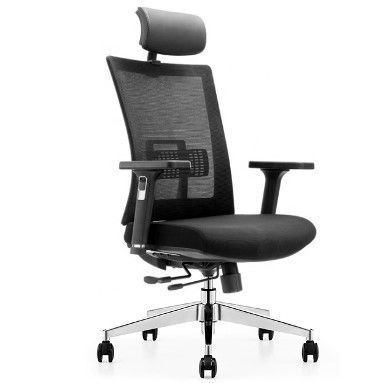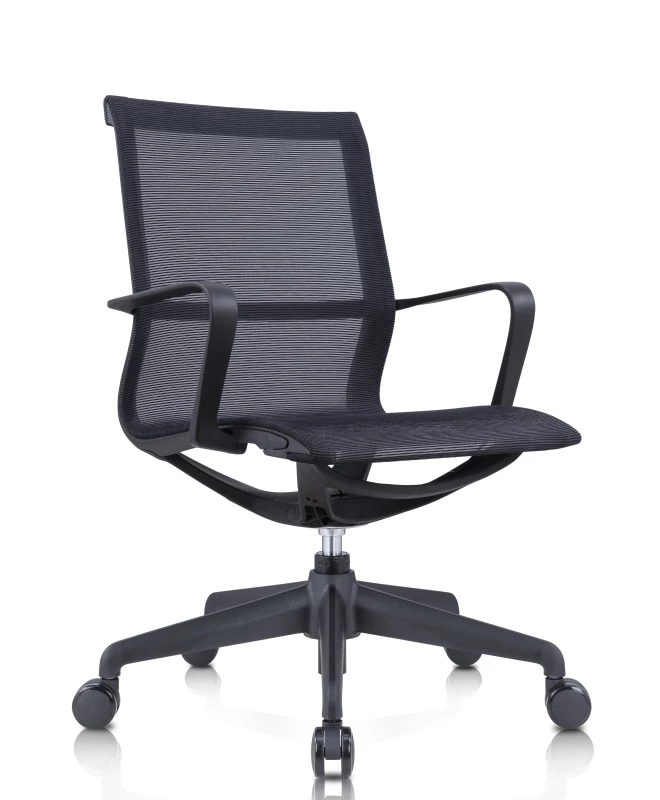
How to Maintain and Clean Your Office Chair for Long-Term Use
Introduction
Your office chair is an essential part of your work environment, supporting your posture and productivity. Whether you’re working from home or in an office, your chair is likely to endure daily use, which means it’s crucial to maintain it properly. Over time, dirt, dust, and general wear can reduce its functionality and comfort. Proper maintenance and cleaning not only extend the life of your chair but also ensure it continues to support your back, legs, and overall posture effectively. In this guide, we’ll show you how to maintain and clean your office chair, including specific tips for mesh chairs and ergonomic designs.
1. Regular Dusting and Vacuuming
Start by regularly dusting and vacuuming your office chair. For mesh chairs, this is especially important because dirt and debris can accumulate in the fabric, leading to discoloration or wear. Use a handheld vacuum or a vacuum with a hose attachment to clean the fabric. Be sure to vacuum the seat, backrest, and the area around the chair's base to prevent dust from settling into the crevices. If your chair has fabric or leather upholstery, use a microfiber cloth to wipe down any exposed areas regularly.
2. Clean the Wheels and Casters
Office chair wheels and casters often accumulate dust, dirt, or hair that can make the chair harder to move and cause uneven wear. To clean them, tilt your chair so you can easily access the wheels. Use a damp cloth to wipe away dirt, or for a deeper clean, use a soft brush to remove built-up grime. If any of the wheels are jammed, try using a small tool like a toothpick to dislodge any debris caught in the casters.
3. Wipe Down the Frame and Armrests
The frame of your office chair can also collect dust and oils from your skin, especially on the armrests. Use a damp cloth with mild soap to wipe down the frame and armrests, focusing on the areas that see the most contact. Be gentle to avoid damaging the surface, especially on chairs with painted or metal finishes. For deeper stains or sticky spots, you can use a mild all-purpose cleaner, but always test it on a small area first.
4. Clean the Seat Cushion and Backrest
For mesh office chairs or those with fabric upholstery, it's important to periodically clean the seat and backrest. For fabric chairs, use a fabric cleaner or a mild detergent diluted with water. Avoid using harsh chemicals that could damage the fabric. Lightly scrub the fabric with a sponge or cloth, focusing on any stained areas. For leather or faux-leather chairs, use a leather cleaner and conditioner to prevent cracks and maintain the material's flexibility.
5. Treating Stains and Spills
Accidental spills are inevitable, especially if you have a coffee or water bottle near your desk. For fabric chairs, blot the stain immediately with a clean cloth to absorb the liquid. Avoid rubbing, as it can spread the stain. For harder-to-remove stains, use a fabric-specific cleaner or a vinegar and water solution. For leather chairs, a leather cleaner specifically designed to remove stains without drying out the material is essential. Be sure to follow the manufacturer’s care instructions for the best results.
6. Maintain the Gas Lift Mechanism
The gas lift mechanism, which controls the height adjustment of your chair, can become clogged with dust or grime over time. To maintain this function, periodically check the gas lift for any signs of resistance when adjusting the chair’s height. If you notice any issues, you can lubricate the lift mechanism using silicone spray. Be careful not to spray directly on the upholstery, as this could cause stains. Regular adjustments help ensure that your chair remains fully functional for long-term use.
7. Tighten Loose Screws and Bolts
As you use your office chair, screws and bolts may loosen, leading to wobbly or unstable components. Periodically inspect your chair for any loose parts, particularly around the base, seat, and armrests. Use a screwdriver to tighten any loose screws or bolts to prevent any potential damage or discomfort while sitting. This simple step can keep your chair sturdy and safe for everyday use.
8. Adjust and Maintain Ergonomic Features
Ergonomic chairs, such as those with adjustable lumbar support, seat depth, and tilt functions, require regular adjustments to maintain comfort. Over time, these features can wear out if not properly adjusted. Make sure to check the lumbar support, backrest recline, and armrest height regularly to ensure they are working as intended. If any part of the chair feels stiff or doesn’t adjust smoothly, it may require professional servicing or lubrication.
9. Preventing Wear and Tear on Upholstery
The upholstery on your chair, especially if it’s fabric or leather, can suffer from regular use. To prevent premature wear, consider using a chair mat under your chair to protect the fabric from constant friction. You can also use protective covers for areas that experience the most contact. In addition, rotating the seat cushion or backrest cushions (if removable) every few months can distribute wear more evenly.
10. Store Your Chair Properly During Downtime
If you're not going to use your office chair for an extended period, it’s a good idea to store it properly. For instance, if you're moving or rearranging your workspace, consider covering the chair with a protective sheet or placing it in a low-humidity area to avoid moisture damage. Avoid exposing the chair to direct sunlight for prolonged periods as it can cause fading or cracking, particularly in leather chairs.
Additional Considerations for Special Chair Types
-
Mesh Chairs
Mesh chairs are great for breathability, but they can also attract dust more easily. Regularly vacuum or wipe down the mesh to prevent dirt buildup. Avoid leaning heavily on the backrest, as the mesh can lose tension over time. -
Leather Chairs
Leather requires extra care to avoid drying out or cracking. Use a leather conditioner once every few months to keep the material soft and flexible. Clean up spills immediately to prevent stains. -
Fabric Chairs
For fabric chairs, regular vacuuming and spot cleaning are essential. Consider using a fabric protector spray to make cleaning easier in the future. -
Ergonomic Chairs
Ergonomic chairs, particularly those with adjustable features like lumbar support, need regular checks to ensure all adjustments are still functional. If the chair's adjustment mechanisms feel stiff, apply a lubricant specifically designed for office furniture. -
Office Chair Mats
If your chair is on a carpeted surface, using a chair mat is a smart way to prevent wear on the casters and fabric. Mats also provide smoother mobility, especially with heavier chairs. -
Wheel Maintenance
Periodically check the wheels for any foreign objects that might cause resistance. Clean them to ensure they roll smoothly and do not hinder your chair’s functionality. -
Reupholstering
If the fabric or leather on your chair is showing signs of excessive wear, consider reupholstering it to extend its lifespan. Many office chair models offer reupholstering options for better value in the long term. -
Adjusting for Comfort
A well-maintained chair won’t serve you well if it isn’t properly adjusted to fit your body. Regularly adjust seat height, armrests, and lumbar support to optimize comfort and prevent fatigue. -
Professional Servicing
If your chair is still showing signs of wear despite regular maintenance, consider sending it for professional servicing. A technician can check and repair parts like the gas lift, tilt mechanism, and casters. -
Disposal and Recycling
If it’s time to replace your office chair, make sure to dispose of it properly by recycling the materials. Many chair manufacturers or local recycling centers accept old chairs and can reuse or repurpose components.
Recommended Products

-
Sujaan Mesh High Back Ergonomic Chair
This ergonomic chair features breathable mesh for comfort and an adjustable backrest for personalized support. Ideal for those looking for both comfort and durability in their office chair.
-
Finmon Mesh Office Chair – Black
With its sleek design and breathable mesh back, this chair provides comfort and style. The adjustable armrests and height options make it perfect for those who need flexibility in their workspace.
Final Thoughts
Maintaining and cleaning your office chair is crucial for both comfort and longevity. Regular care ensures that your chair continues to provide the necessary support for long-term use, whether you're working from home or in an office setting. By following these simple steps—vacuuming regularly, treating stains, tightening screws, and adjusting ergonomic features—you can prolong the life of your chair and enjoy a more comfortable work experience. A well-maintained chair will not only look great but also support your posture and well-being for years to come.
FAQ
How often should I clean my office chair?
You should clean your office chair at least once a month, but if you eat at your desk or use it frequently, cleaning every two weeks is ideal.Can I use regular cleaning products on my office chair?
It’s best to use cleaning products specifically designed for office furniture, especially for leather and fabric chairs, to avoid damage.How do I keep my office chair from getting wobbly?
Regularly tighten the screws and bolts on the base, seat, and armrests. Periodically check for any loose parts and adjust as needed.Can I replace the wheels on my office chair?
Yes, most office chairs allow you to replace the wheels or casters if they become damaged or worn. Check with the manufacturer for compatible replacements.


